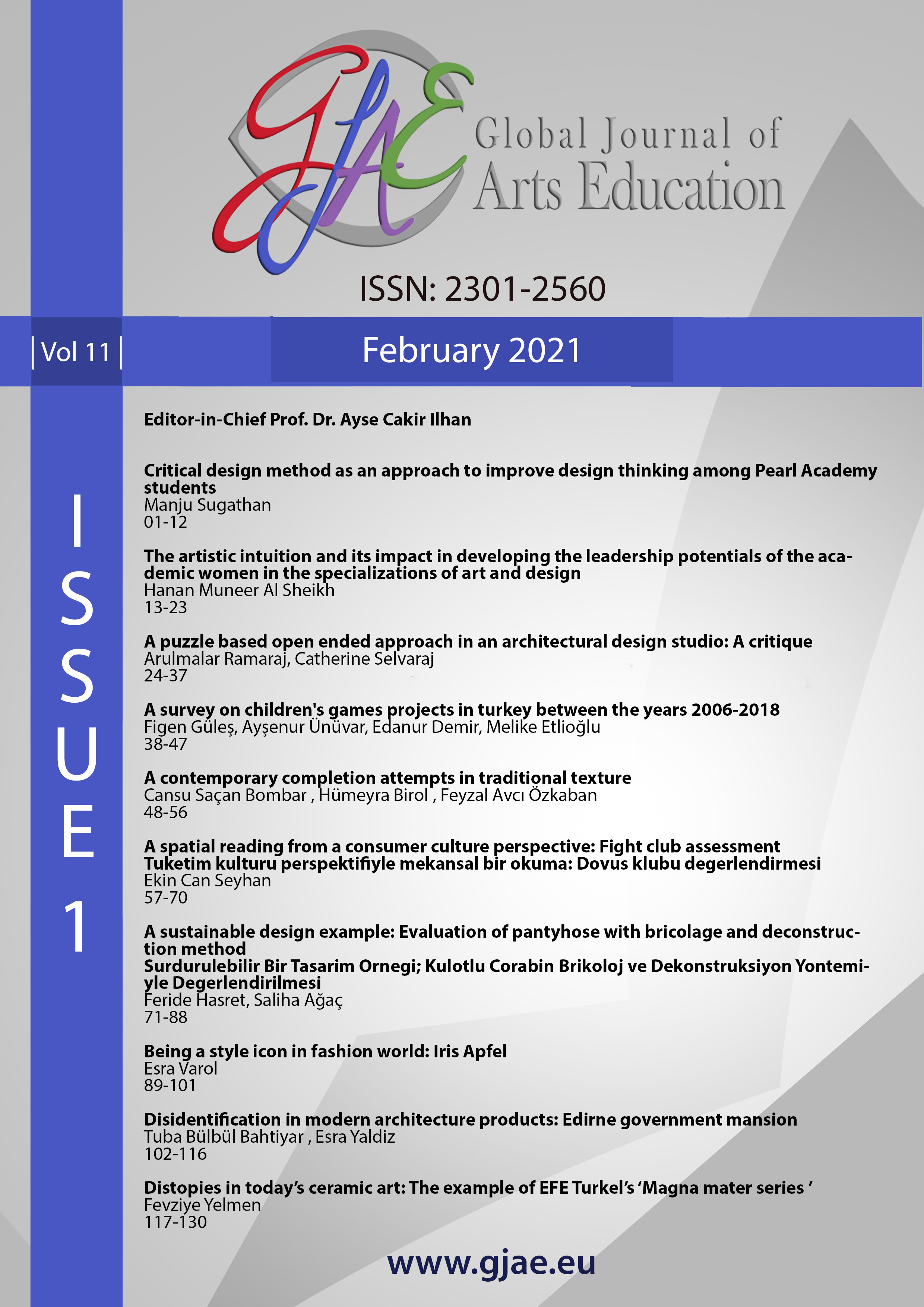Dystopias in today’s ceramic art: The example of EFE Turkel’s ‘Magna mater series ’
Main Article Content
Abstract
In this study, ceramic artist EFE Turkel’s ‘Magna Mater’ series will be analysed using the phenomenological method in the context of the concept of dystopia. Whether there is a spatial belonging to utopia is a phenomenon that has been debated by philosophers. In other words, the question of whether utopia is a place to live is part of these discussions. On the other hand, with utopia, there is also the concept of dystopia, which is handled with an almost dialectical approach, spatialised as an inhabitable and impossible place. The concept of dystopia, used by John Stuart Mill in 1868, was encountered especially in literary works. When the concepts of dystopia and utopia are evaluated in the context of life experiences, it can be said that the starting point of the concept of dystopia is based on a previously experienced life practice. While utopia is the reciprocal of idealisation, dystopia is, on the contrary, built on the imperfect. Dystopia as an artistic phenomenon that takes place within the existentialism of mankind. It represents a place that does not exist in the mind of the viewer, but on the other hand, this non-existent place is also another not yet experienced place of an experienced place. Since dystopia emerges as a contradiction to the concept of utopia, the first examples are critical, and in the later examples the introversion and unhappiness that the artists live in their production and inner world are dominant. These thoughts have been featured in novels such as Fahrenheit 451 and Brave New World. In addition, the dystopic city image created in the movie Metropolis and some scenes depicted in the 1984 novel are examples of this. Edvard Munch’s The Scream, Henry Moore’s sculptures and Benjamin Peret’s Automata photographs are among the known examples. The works of artists such as Kannar Lichtenberger, Hoffmann Ruan and Alison Ruttan can be shown as examples of dystopic approaches in today’s ceramic art.
Keywords: Utopia, dystopia, ceramic, Art, EFE Turkel.
Downloads
Article Details

This work is licensed under a Creative Commons Attribution 4.0 International License.
Authors who publish with this journal agree to the following terms:
- Authors retain copyright and grant the journal right of first publication with the work simultaneously licensed under a Creative Commons Attribution License that allows others to share the work with an acknowledgement of the work's authorship and initial publication in this journal.
- Authors are able to enter into separate, additional contractual arrangements for the non-exclusive distribution of the journal's published version of the work (e.g., post it to an institutional repository or publish it in a book), with an acknowledgement of its initial publication in this journal.
- Authors are permitted and encouraged to post their work online (e.g., in institutional repositories or on their website) prior to and during the submission process, as it can lead to productive exchanges, as well as earlier and greater citation of published work (See The Effect of Open Access).

